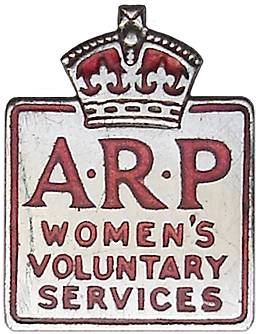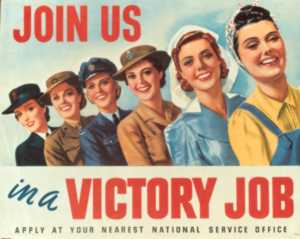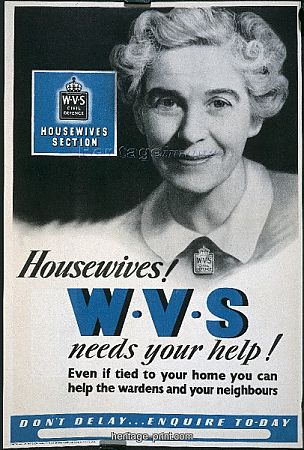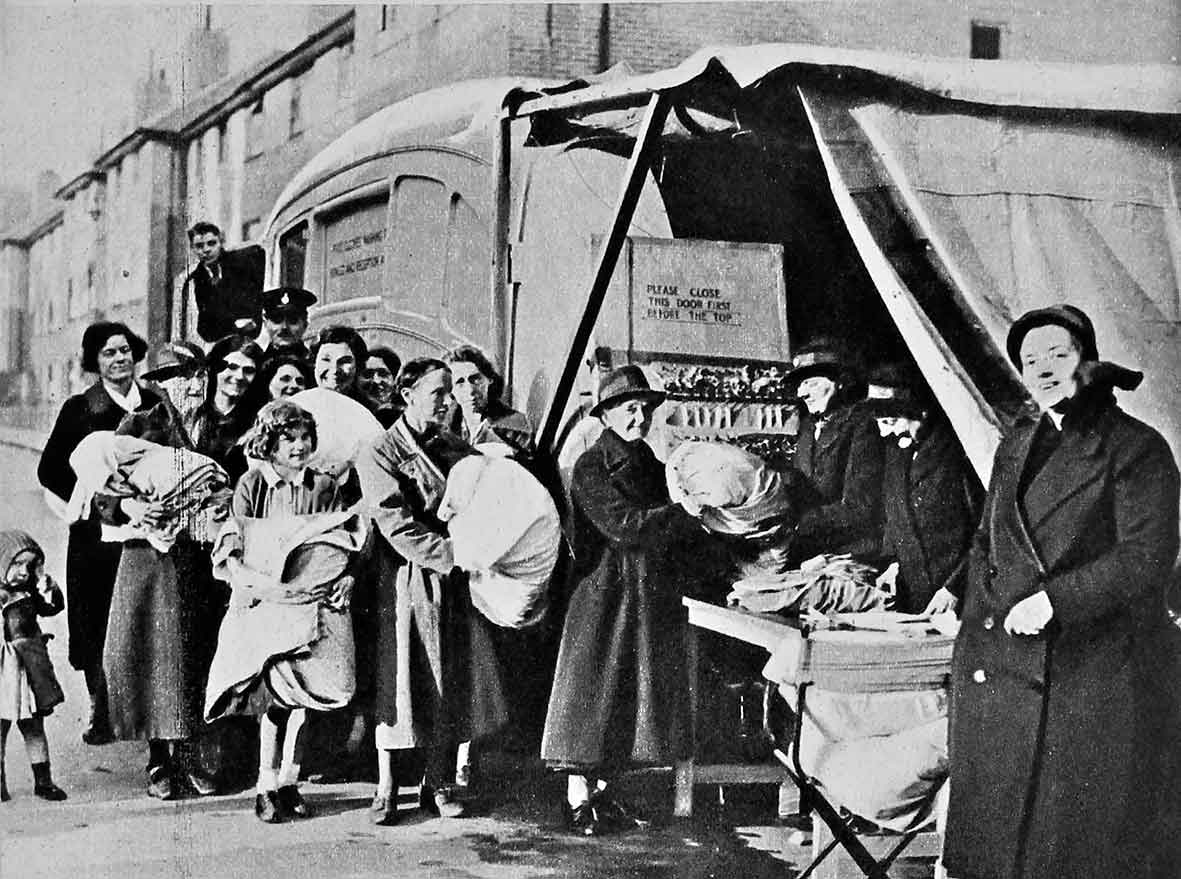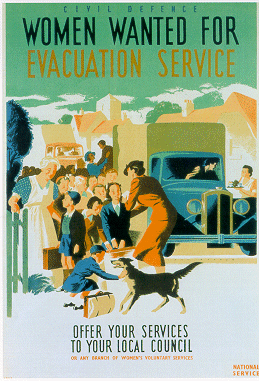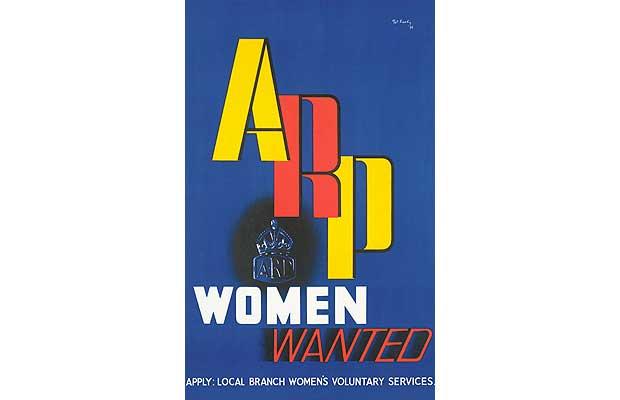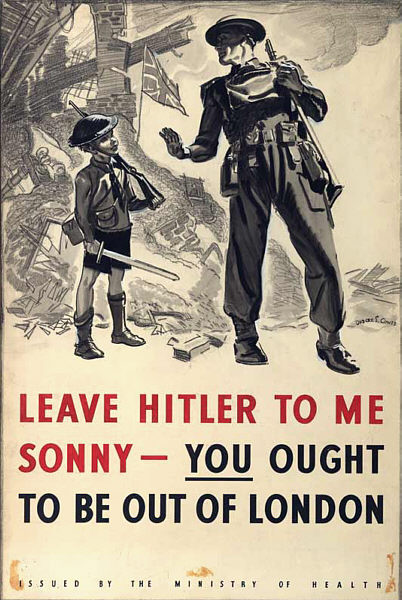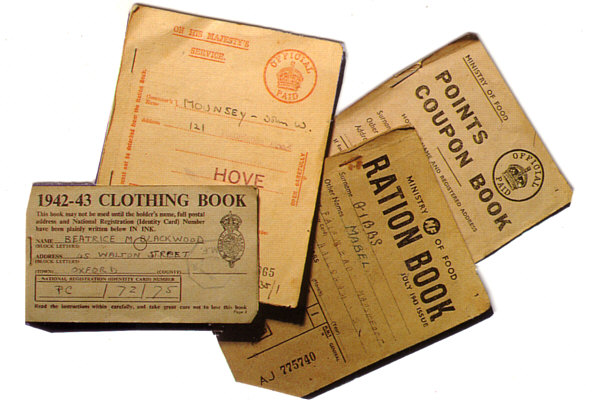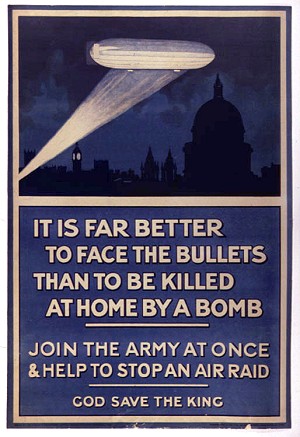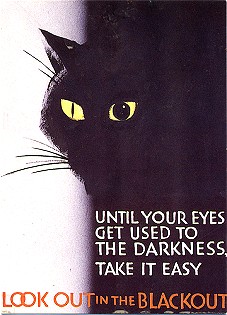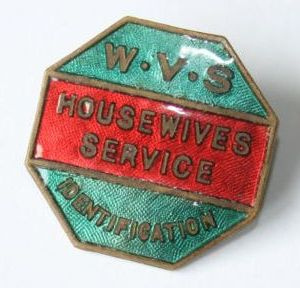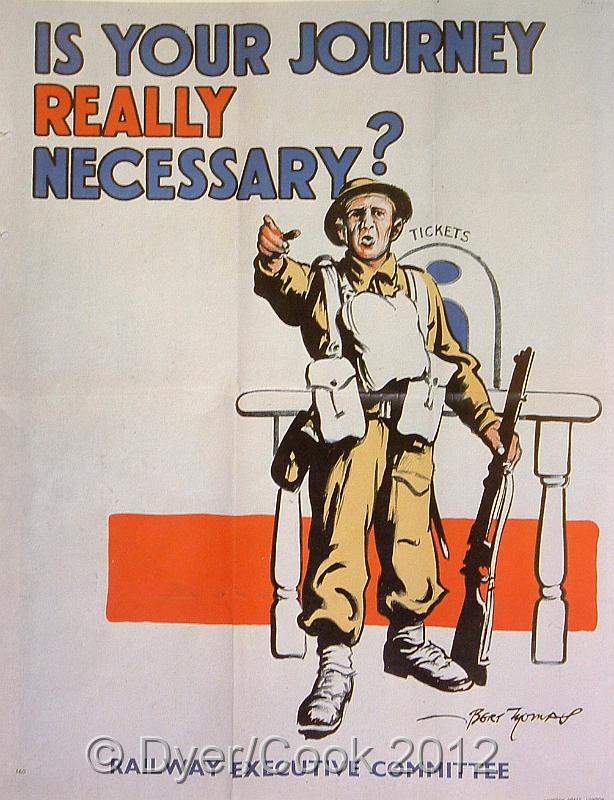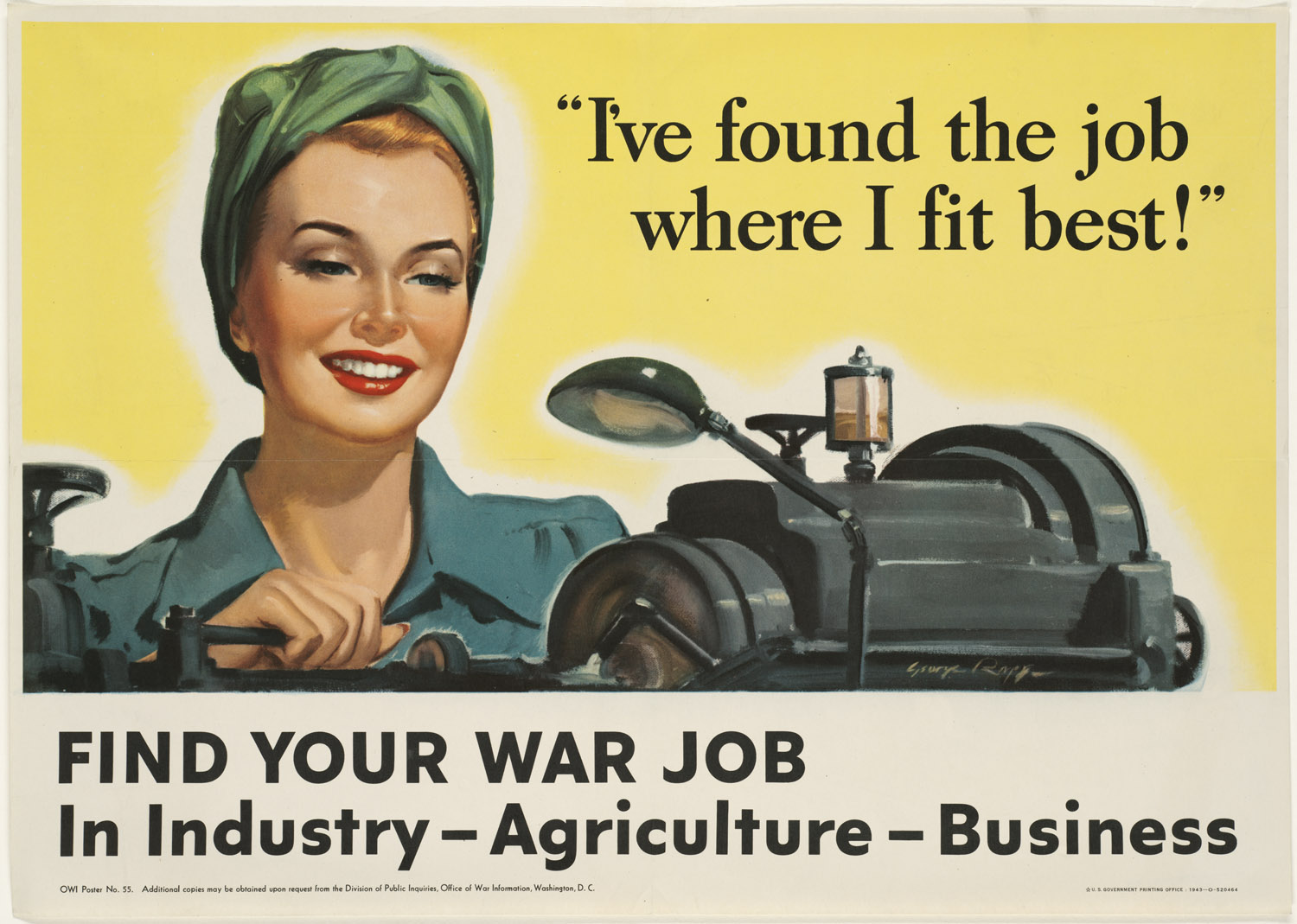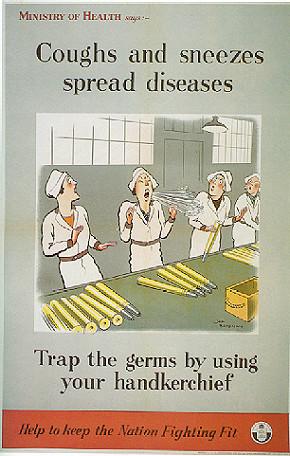A Brief History of the WVS
How It Started
With the threat of war looming ever closer, 1938 saw Britain as a nation becoming increasingly concerned about home defence. Worries about enemy air attacks were at the forefront of everyone’s thoughts as they remembered WW1 when around 1400 people in Britain had been killed by aerial bombs. And even more recently in people’s minds was the terror caused by carpet bombing of the Spanish Civil War. This new style of mass-devastation had claimed over 10,000 lives during the three year conflict.
The home front needed to make preparations for war… and fast.
The idea of setting up a women’s organisation to help volunteer within the Air Raid Precautions department came from the then Home Secretary, Samuel Hoare.
Originally named The Women’s Voluntary Service for Air Raid Precautions, the WVS was founded in May 1938 by Stella Isaacs, the Dowager Marchioness of Reading.
The government set out the objectives of the WVS “as the enrolment of women for Air Raid Precaution Services of Local Authorities, to help bring home to every household what air attack may mean, and to make known to every household in the country what it can do to protect itself and the community.” The aim was for every woman to be given the opportunity to help defend the home front against enemy air attacks.
The Home Secretary said, “as regards their civil defence functions, the Minister regards the Women's Voluntary Service as occupying… much the same relationship as that of the women's auxiliary services for the armed forces of the Crown."
By the time war was declared on 3 September 1939, some 165,000 women from groups who were unable to ‘join up’ or do essential war work (such as older women, the young or those with dependants) had become members.
What Happened Next
In the months that followed, the WVS became much more than just a supplement to the ARP and as their role diversified, they became known as The Women’s Voluntary Service for Civil Defence.
Though much of the WVS duties centred around the aftermath of air raids, these women played a part in many and varied campaigns, schemes and services wherever they could be of assistance. Lady Reading had a simple philosophy for the WVS: if a job needed doing, it was done.
The women of the WVS were certainly the unsung heroes of the war years, doing anything they could to help anyone in need at any time, in any place. They made tremendous sacrifices for their cause, often selflessly placing themselves in the way of extreme peril in order to help others.
During the Blitz, 241 members of the WVS were killed on duty and many more injured.
Organisation
The WVS was a voluntary body so there was no concrete rank structure at local level. This allowed the organisation to draw on its strengths and maximise efficiency by simply being a group of women doing what they did best and getting the job done as part of a team in the truest sense. The closest the WVS came to ranks was ‘job designations’ such as County Organiser, Regional Administrator or Centre Leader
Hence a woman that took on the role of group leader for a specific task one week might easily find herself as one part of a different team with another task under a new group leader the next.
Neither did the WVS have a compulsory uniform. There was a uniform (designed by Digby Morton) but it was not free and therefore out of the question for many. Mostly, members would go about their work wearing the WVS badge on their lapels.
So what did the WVS do?
Salvage collection/recycling & exchanging schemes
During the war years, austerity was key and the WVS did all it could to help with the collection of material for the war effort: removal of iron railing from public buildings, collections of paper and rubber as well as pots and pans, kettles and jelly moulds. Even old bones were taken for use as glue and fertilisers.Clothing was collected and distributed to people who had lost all their possessions in the bombings and mothers could exchange clothing that had become too small for their children.In October 1939, Lady Reading appealed to the United States about the need for clothing in the UK, leading to the ‘Bundles for Britain’ scheme whereby huge amounts of clothing was sent over by the American Red Cross for distribution via WVS Emergency Clothing Stores.
Today’s recycling projects seem bleak by comparison with wartime schemes!
Mobile Canteens & Rest Centres
The women of the WVS soon became adept at providing food and drink around the clock. Not only did the WVS provide food and drink for the victims of the bombings, they also did the same for ARP workers and all those other services involved in giving aid during the bombing. This kind of task often placed WVS members in terrible danger as they worked tirelessly in spite of the falling skies. One WVS member in Barnes fed 1,200 bomb victims in one day, cooking in her own kitchen.And their dedication didn’t end there. They would provide comfort and shelter for bomb victims, looking after those who were injured left homeless until alternative arrangements could be made for them. ! When soldiers began arriving back in Britain after the evacuation of Dunkirk, members of the WVS were there handing out food, drink, warm clothing and comfort.
Housewives Service
Each member would be allocated an area of the city where they lived and would be there to assist with any immediate aid (not first aid) needed during times of emergency following air raids.
Evacuation
The WVS played an immense part in evacuation. It is estimated that they helped to move around 1.5 million people (mainly children) out of ‘evacuation areas’ in the early days of September 1939. They would be there in the evacuation areas, to help make sure the evacuees made it onto the right transports out of the cities. They would be there during the journey, to offer comfort and refreshment to evacuees.
One evacuee remembered, ‘A lady in a green uniform [WVS]] and large hat, leaned in the window and gave us all a little packet of nuts and raisins and an orange.’ *
And at the other end, in the reception areas, the WVS were there again, assisting with greeting the evacuees and getting them billeted.
Before the evacuation, the WVS had been responsible for carrying out surveys to identify possible accommodation in reception areas, making sure billets were available for incoming evacuees.
One WVS member was said to have travelled 126,490 miles in three years and escorted 2,526 children under five.
Rosehip Harvesting
Rosehip syrup is a time-honoured remedy and was commonly given to infants as a vitamin-rich (and tasty) supplement. It was said to guard against colds all winter, probably owing to the abundance of vitamin C which strengthens the immune system. The WVS helped to gather rosehips which were then turned into syrup. This was then given out to mothers and babies by WVS volunteers.
Information Centres
Incident Inquiry Points (IIPs) were places where people could go after air raids to find out about missing loved ones in affected areas. At first, these were the responsibility of the ARP but, owing to their efficiency in assisting in the task, the WVS were soon given control over the IIPs in order to free up ARP workers for the important work they had to do with the fire brigade. WVS volunteers were often tasked with breaking the worst news to the bereaved, even escorting them to the mortuaries to identify the dead.
Caring for the Elderly
As a vulnerable group who often felt the strain of wartime conditions more keenly than the young, the older generation were prime candidates for assistance from the WVS who would visit them in their homes, offering comfort and any help needed.
Food Leaders
Every WVS centre would have its own ‘Food Leader’ who would be required to assist local authorities with food rationing. They would also help educate the public by giving talks on recipes using rationed foods, as well as nutrition and cooking methods in difficult conditions where utilities may have been interrupted as a result of air raids.
Civil Defence Support
The WVS offered whatever support was needed to the ARP, the Fire Brigade, Ambulance Drivers, Public Transport, the Home Guard and Civilians.
Re-Homing Gift Scheme
This scheme was started to offer help to civilians who had lost all their belongings during air raids. This could take the form of anything from furniture to bed linen, rugs to cooking implements. Of course, as well as distributing these ‘gifts’ to the distressed, the WVS also had to collect them.
Discussions & Training Courses & Leaflet Distribution
The WVS held all kinds of talks and discussions, groups and advice sessions on all sorts of matters for the home front war effort.
They organised ‘Make do and Mend’ classes to help people get the most from their clothing during rationing and knitting circles to knit socks for overseas troops.
They were involved in the ‘Grow Your Own Food’ and Dig for Victory’ campaigns, urging civilians to help themselves in times of food shortage.
They organised first aid courses (although the classes themselves were taught by trained professionals) to educate the public.
They distributed leaflets and pamphlets offering advice on every aspect of wartime home front life from “Information on bed-wetting for householders taking in unaccompanied children” to “What You Can Do” in the event of an air raid.
They also organised vital campaigns such as ‘Salute the Soldier’, ‘Wings for Victory’ and ‘Spitfire Funds’.
Home Front Warriors
Many people may not realise the essential work that WVS volunteers carried out on the home front not only during the war years, but in the months before and for a long time after fighting ceased. They were involved, in some way, in every single facet of life during WW2. Without these women, the war would have caused so much more chaos and loss of life.
At the heart of everything else, WW2 brought out the self-sacrificing part of many women’s nature. Members of the WVS worked day and night, tirelessly assisting anyone in need and placing themselves in harm’s way without a second thought.
